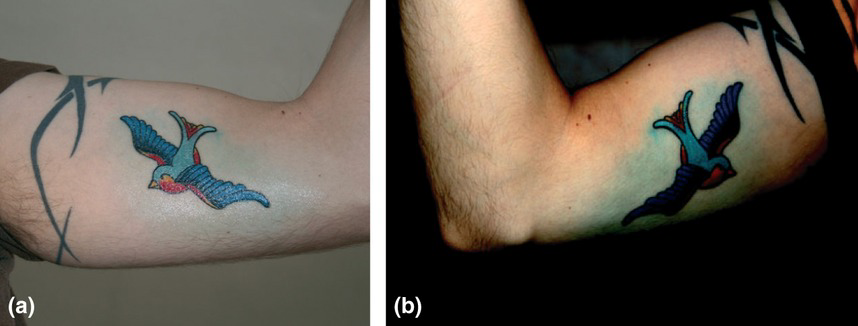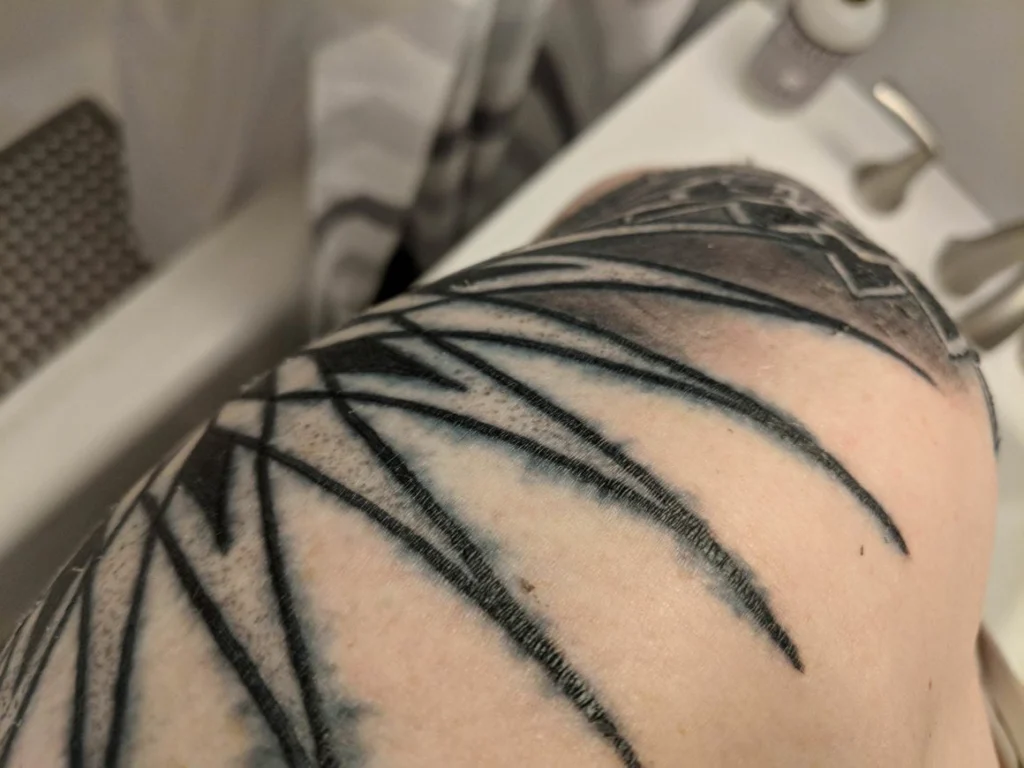Tattoos are a form of body modification that has gained widespread popularity in recent years. However, sometimes, complications such as tattoo blowouts can occur, leading to dissatisfaction and concern among individuals. In this comprehensive guide, we dive into the intricacies of tattoo blowouts, exploring their causes, symptoms, and available treatment options.
What is a Tattoo Blowout?
A tattoo blowout refers to the unintended spread of ink beyond the desired boundaries of a tattoo. This phenomenon typically occurs when the ink is injected too deeply into the skin or when the tattoo artist uses excessive pressure during the tattooing process. As a result, the ink spreads into the surrounding tissue, creating a blurred or smudged appearance.
Characteristics of blowouts
Blowouts in tattoos can be identified by several distinct characteristics. These include:
Blurry Lines: Blowouts often result in blurred lines around the edges of the tattoo design. Instead of crisp, defined lines, the ink may appear smudged or spread out beyond the intended boundary.
Halo Effect: A common indicator of a blowout is a halo or shadow effect surrounding the tattoo. This effect occurs when the ink migrates beyond the initial outline of the design, creating a fuzzy or hazy appearance.
Ink Spreading: It typically involves the ink spreading into the surrounding skin tissue, causing the tattoo to lose its clarity and sharpness. This phenomenon can give the tattoo a distorted or uneven look.
Uneven Coloring: Another characteristic of it is the uneven coloring within the tattoo. Areas that have experienced ink migration may appear darker or more saturated compared to the rest of the design.
Visible Ink Trails: In severe cases of blowout, visible ink trails or streaks may extend from the main body of the tattoo into the surrounding skin. These trails can further contribute to the tattoo’s blurry or undefined appearance.
Location-Specific Effects: Blowouts are more likely to occur in areas of the body with thinner or more delicate skin, such as the fingers, wrists, and ankles. Additionally, tattoos on areas prone to movement or stretching, such as the hands or feet, may be more susceptible to blowouts due to the constant friction and tension placed on the skin.
Recognizing these characteristics can help individuals identify potential blowouts early on and take appropriate action to address them, whether through consultation with a tattoo artist or dermatologist or through diligent aftercare to minimize further complications.

Causes of Tattoo Blowouts
Several factors can contribute to the occurrence of tattoo blowouts, including:
Inexperienced Tattoo Artists: They are more likely to occur when the tattoo artist lacks experience or expertise in proper tattooing techniques.
Skin Type: Individuals with thin or sensitive skin may be more prone to experiencing blowouts due to the skin’s inability to hold the ink properly.
Tattoo Location: Certain areas of the body, such as the hands, fingers, and feet, are more susceptible to blowouts due to the uneven distribution of fat and muscle in these areas.
Symptoms of Tattoo Blowouts
It may manifest in various ways, including:
Blurred Lines: The lines of the tattoo may appear blurred or fuzzy, indicating that the ink has spread beyond the intended boundaries.
Ink Spreading: Visible spreading of ink outside the designated tattoo area, giving the tattoo a distorted or uneven appearance.
Shadowing: the presence of shadow-like patches around the tattoo, caused by the diffusion of ink into the surrounding tissue.
Treatment Options
While blowouts cannot be reversed entirely, several treatment options may help minimize their appearance, including:
Laser Tattoo Removal: Laser technology can effectively break down the ink particles in the affected area, allowing the body to absorb and eliminate them gradually.
Cover-Up Tattoos: In some cases, a skilled tattoo artist can design a new tattoo to cover the blowout effectively, disguising its appearance.
Scar Revision Surgery: For severe cases of tattoo blowouts accompanied by scarring, surgical techniques such as scar revision may be considered to improve the aesthetic outcome.
Preventing Tips
To reduce the risk of experiencing tattoo blowouts, consider the following precautions:
Choose a Reputable Tattoo Artist: Research and select a tattoo artist with a proven track record of skill and professionalism to ensure a successful tattooing experience.
Optimal Placement: Discuss with your tattoo artist the best placement for your tattoo, considering factors such as skin thickness and muscle structure, to minimize the risk of blowouts.
Follow Aftercare Instructions: Proper aftercare is essential for promoting optimal healing and minimizing complications, including tattoo blowouts. Follow your tattoo artist’s instructions carefully to ensure a smooth recovery process.
For more, read: Ink Poisoning
FAQs
What exactly causes tattoo blowouts?
It typically occurs when the ink is injected too deeply into the skin or when excessive pressure is applied during the tattooing process. Factors such as the skill level of the tattoo artist, the thickness of the skin, and the location of the tattoo on the body can all contribute to the likelihood of experiencing a blowout.
Are certain areas of the body more prone to tattoo blowouts?
Yes, certain areas of the body, such as the hands, fingers, and feet, are more susceptible to tattoo blowouts due to the uneven distribution of fat and muscle in these regions. Additionally, areas with thin or sensitive skin may be more prone to experiencing blowouts compared to areas with thicker skin.
Can tattoo blowouts be completely reversed?
While tattoo blowouts cannot be entirely reversed, there are treatment options available to minimize their appearance. Techniques such as laser tattoo removal, cover-up tattoos, and scar revision surgery may help reduce the visibility of blowouts, although the extent of improvement will vary depending on the severity of the blowout and individual factors.
How can I prevent tattoo blowouts from happening?
To reduce the risk of experiencing tattoo blowouts, it is essential to choose a reputable tattoo artist with experience in proper tattooing techniques. Additionally, discussing the optimal placement of the tattoo with your artist and following proper aftercare instructions can help minimize the likelihood of blowouts. Prioritizing safety and quality throughout the tattooing process is key to achieving the desired results without complications.
Conclusion
Tattoo blowouts can be a source of frustration for individuals seeking to adorn their bodies with meaningful artwork. By understanding the causes, symptoms, and treatment options associated with tattoo blowouts, individuals can make informed decisions and take proactive measures to minimize their occurrence. Remember to prioritize safety and quality when undergoing the tattooing process to achieve the desired results without complications.

